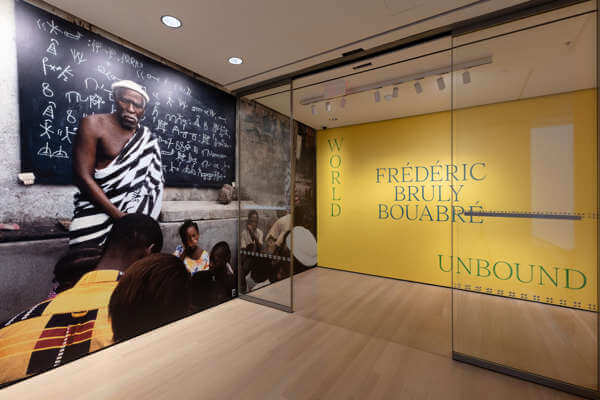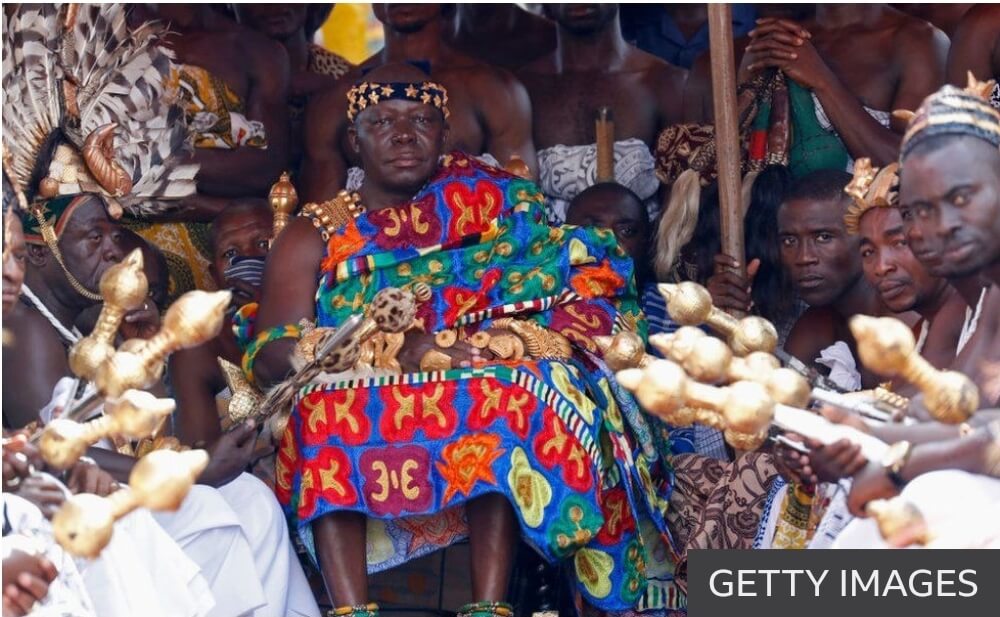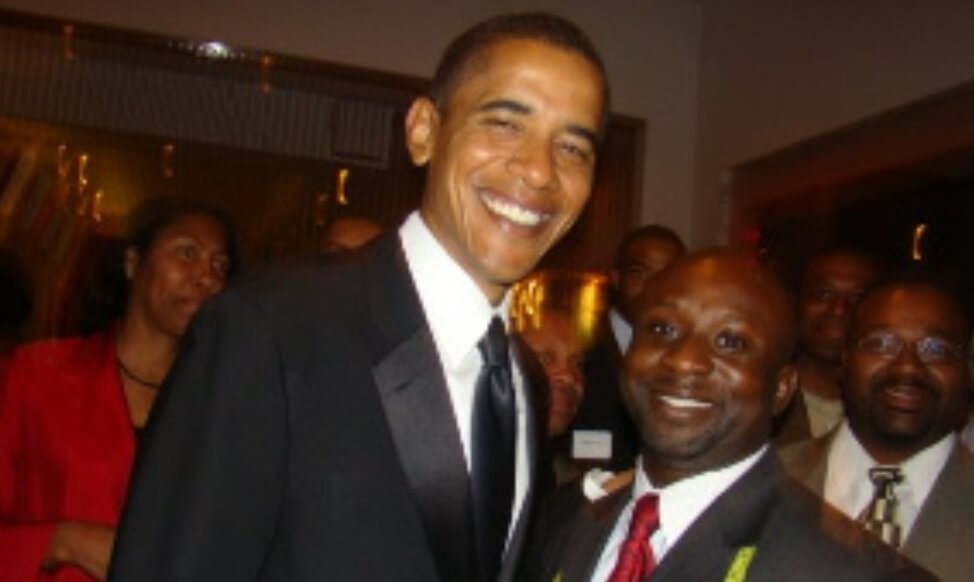Frédéric Bouabré: Museum of Modern Art is Finally Paying Attention to Great African Artists

A survey of the career of the Ivory Coast’s Frédéric Bruly Bouabré, one of the continent’s most celebrated artists, comes to New York. Bouabré had a vision in 1948 that inspired him to create a new writing system. His more than 1,000 sketches are on display at the Museum of Modern Art (Mirrored from Sebastian Smee's article on The Washington Post).
“Frédéric Bruly Bouabré: World Unbound,” at New York’s Museum of Modern Art (MoMA), sets more than a thousand of these small, colorful drawings, all in white frames, across a run of large galleries in a display unlike any I have seen.
Organized by curator Ugochukwu-Smooth C. Nzewi with Erica DiBenedetto, the show is at once overwhelming and refreshing — a spur to laughter, fascination and philosophical reflection. And it’s only the second show at MoMA of a Black artist from Africa. The first, in 2018, featured the fantastical city models of the Congolese artist Bodys Isek Kingelez.
Bouabré (1923-2014) was born in a Bété village near Daloa, the major city in west-central Côte d’Ivoire. He was one of the first Ivoirians to be educated by the French colonial government, and he turned to art after experiencing a vision in 1948.
Forty years later, he offered a definition of art that rinses the mind like cool, silken water drenching a heat-flushed face. “Art is know-how,” he said. “Art is searching, re-researching, and discovering sublime innocence.”
Bouabré’s drawings include handwritten descriptions (in French) that meander around the rectilinear borders of each image. He uses them, as he said, “to explain what I’ve drawn,” in the belief that “writing is what immortalizes. Writing fights against forgetting.”
Western culture often sets pictures and words against one another. But we know, from Egyptian hieroglyphics and from early Chinese writing, that they sprang from the same source of wonder, the same will to knowledge.
Bouabré’s career was devoted to merging the two. In the process, he established an art form that, in his own words, “sharpens the love of life.”
Read Also: Francis Kéré, first African to win Pritzker Prize, Architecture’s Nobel
Bouabré was made famous by André Magnin, a curator that included Bouabré in “Magiciens de la Terre,” a groundbreaking 1989 exhibition in Paris.
People are still debating the merits of “Magiciens de la Terre,” which placed 50 (mostly untrained) non-Western artists on the same level as 50 (mostly trained) Western artists. But such debates can be frustratingly academic, underwritten as they usually are by ideologies about what the world should look like — but doesn’t. It is probably better to acknowledge the show’s unarguable impact and to embrace the specific visions and life stories of the many wonderful artists it uncovered.
Bouabré, immersed in the customs of his village, Zépréguhé, learned about cultural taboos from his mother and family elders. He didn’t complete his primary education, but as his family moved about, he attended different schools and learned to read and write in French. After serving in the French West African navy during World War II, he ended up working in the French colonial administration.
With his knowledge of French and a budding interest in ethnography (particularly the culture of his own Bété people), Bouabré worked as a translator, informant and researcher for the Institut Francais d’Afrique Noire during a period, the 1950s, that saw France’s eight West African colonies preparing for independence.
A key encounter came when Bouabré attended lectures in Dakar, Senegal, about the African origins of Egyptian civilization. The lectures were delivered by the Senegalese scholar Cheikh Anta Diop, who stressed the need for Africans to develop modern writing systems rooted in ancient African culture, including Egyptian hieroglyphics.
Bouabré was impressed. He sought to apply Diop’s advice to a famous collection of diversely shaped and textured pebbles from his own region. Known as the Bekora stones, the pebbles are thought to have supernatural powers. Bouabré became convinced they were the remains of an ancient writing system, and he wanted to use them as the basis for a new alphabet, or syllabary.
By 1956, his focus had moved away from the pebbles, but he was working on a related project — the development of a Bété syllabary that methodically transformed speech into simple pictograms and then into text. He turned this project, which he called “Alphabet Bété,” into an artwork in the early 1990s, and it is this work, comprising no fewer than 449 drawings, that opens the MoMA show.
“Alphabet Bété” was Bouabré’s attempt to preserve and extend the knowledge of Bété culture. The Bété syllabary was created for the Bété language of Ivory Coast (in West Africa) in the 1950s by Bouabré. It consists of pictographic characters, which represent scenes from life and stand for syllables in Bété.
The pictograms include birds, animals, musical instruments, tools, hand signals, people performing various tasks, and allusions to proverbs and taboos. The drawings are rudimentary (they’re often just shapes), and the allusions are in most cases impossible for an outsider to decipher. But that doesn’t matter. The project as a whole, in its ambition and underlying premise, is remarkable.
“Alphabet Bété” soon drew the attention of the founder of the Institut Francais d’Afrique Noire, the French naturalist Théodore Monod.
Monod’s interest conferred on Bouabré the credibility he sought. (Bouabré later marveled that, as someone who saw himself as being “of the LOWEST cultural level” and “having no degree from the Sorbonne,” he had never dreamed he would be christened a “’scholar,’ that glorious name that cradles in a heavenly way the soul of every person it decorates.”)
Even as he worked on “Alphabet Bété,” Bouabré was branching out. He catalogued aspects of neighboring cultures — not just Bété. He founded a short-lived religious sect, “the Order of the Persecuted,” and spent 18 years on a 325-page instruction guide for the religion, complete with illustrations.
Read Also: Meet the Kyode People of Ghana, Burkina Faso and Ivory Coast
His interest in combining language and pictograms was enhanced when he learned, in the early 1970s, about Akan gold weights, a pre-colonial system of cast bronze and copper objects used for weighing gold dust. Combining geometric patterns with stylized representations of animals and humans, the weights allude to Akan proverbs. Bouabré delighted in the way they distilled complex oral traditions and, in 1989-1990, made his own series of 42 drawings based on Akan gold weights.
Bouabré went on to pursue various taxonomic projects, and these make up the rest of the exhibition — the first ambitious survey of his work in North America. The drawings that make up these projects all have roughly the same format as “Alphabet Bété,” but they address increasingly universal and ambitious themes — from “Bété Civilization” (27 drawings) to “Readings From Signs Observed on Oranges” (86 drawings), “Museum of the African Face” (162 drawings), “Homage to the Women of the World” (200 drawings) and “Democracy Is the Science of Equality” (182 drawings).
The show, which was made possible by a gift of African art from the collector Jean Pigozzi and by loans from Magnin, also includes several manuscripts (including the aforementioned guide to Bouabré’s religion).
There’s something hypnotic and incantatory about this exhibition. What lingered in my mind after seeing it was not just Bouabré’s wide-ranging curiosity and intelligence, his dedication, his sly wit. It was his view of the world, which combines open-mindedness with an almost Platonic faith in the idea that different manifestations of culture might not be just fleeting and arbitrary, but durable, sustaining and joyous. A revelatory show.
Frédéric Bruly Bouabré: World Unbound through Aug. 13 at the Museum of Modern Art, New York. moma.org

Abeeb Lekan Sodiq is the Managing Editor of theafricandream.net, a pan-African news website subsidiary of US-based TheAfricanDream LLC. He is also a Human Resource Practitioner, and a freelance Graphics Designer. He has worked with prominent personalities, including ambassadors, secretariats, international organisations, universities, celebrities, NGO, and media firms.



